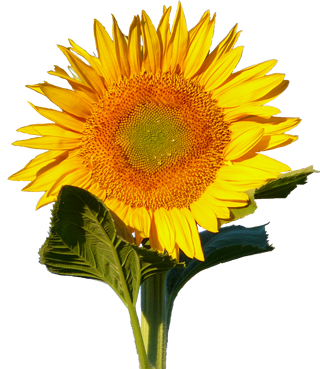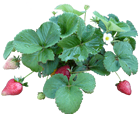
Garden and Plate
The Molecular Biology of Nutrition











While it's easier to buy a bag of shelled and salted sunflower seeds than it is to crack open your own home-grown seeds, sunflowers still have a place in my garden. They are easy to grow, add color to the garden, and the birds love them. I've found that if I plant the seeds when I put out my tomato transplants in the spring, the sunflower seeds ripen at the same time as the tomatoes. Since the birds prefer sunflower seeds over tomatoes, they leave my tomatoes alone. The sunflowers act as a "trap crop".
Sunflower plants come in many different sizes. I sent away for a packet of "Russian Mammoth" sunflower seeds several years ago, and have re-planted seeds produced from the decendants of the first generation ever since. I like the Russian Mammoth variety because the plants have huge leaves, grow over 12 feet tall, and have a single dinner-plate sized flower on top. The only downsides to the plant are it's short lifespan (which is true for all varieties of sunflowers), and it's inability to support it's large, fully-ripe flower.

Sunflowers lead short lives that last only a few months, so they don't stick around long enough to have many pests. The notable exception are the birds, which love to eat the seeds. If you like to attract birds to your yard, sunflowers are a perfect choice. The birds don't bother the plant when the flower is in bloom, and the plant will die shortly after the seeds are ripe anyways. If you want the seeds for yourself, then the birds are a nuisance. It's easy, though, to place a net over the seeds, since they are all located in one spot at the top of the plant. I usually either get my seeds early, or let the birds have their fill, and then pick the remaining seeds from the center of the flower. The Russian Mammoth flowers are so large that the birds can't reach the center of the flower. They perch on the edge of the flowers and eat the reachable seeds near the edge. There's plenty of seeds for everyone.

Sunflowers come in all sizes. This Russian Mammoth sunflower is one of the larger varieties. This plant is over twelve feet tall, and has a flower larger than a dinner plate.